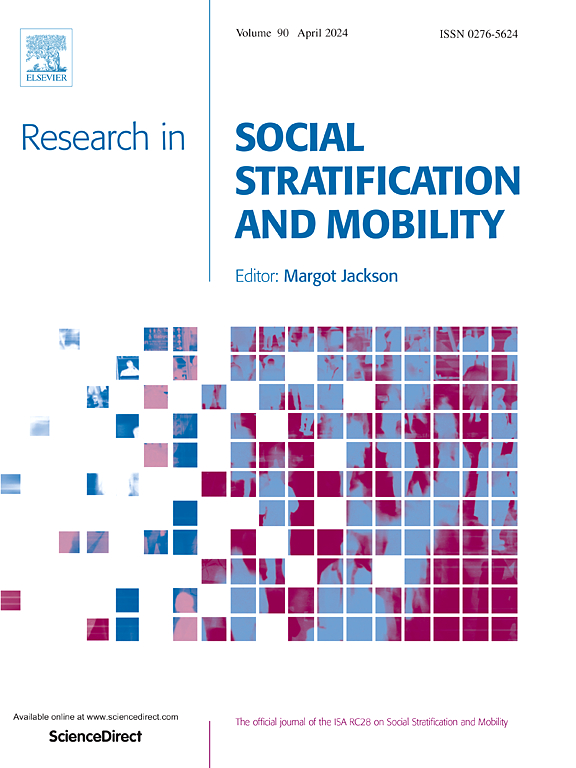不平等的权衡?双职工增加中夫妻之间和夫妻内部的就业不平等
IF 2
1区 社会学
Q1 SOCIOLOGY
引用次数: 0
摘要
本文将欧洲双职工的兴起与两个相关现象联系起来,这两个现象迄今为止大多是分开研究的:家庭就业两极化和非全日制就业。前者涉及异性工龄夫妻之间的不平等,以及他们在双重收入和双重无业之间两极分化的趋势。后者表明,双职工夫妇内部仍然存在不平等,女性比男性更有可能从事兼职工作。本文研究了自 1983 年以来的 11 个欧洲国家。它首先记录了双职工、就业两极化和兼职工作的长期趋势。然后,它将后两个概念正式联系起来,通过建立一个新颖的转移-分享方程,从兼职和全职工作水平的变化以及它们在夫妻间平等或不平等分配的变化来解释双职工的增加。结果表明,兼职工作提高了就业水平,但并未真正改变就业在夫妻间的分配方式。另一方面,随着时间的推移,全职工作在夫妻间的分布变得更加不平等,尤其是在 2008 年危机之后,在此期间,女性全职工作加速增加,而男性全职工作有所减少。本文还确定了欧洲各国的共性和差异模式。本文章由计算机程序翻译,如有差异,请以英文原文为准。
The inequality trade-off? Employment inequalities across and within couples in the rise of dual earning
This paper links the rise of dual earning in Europe with two associated phenomena, hitherto mostly studied separately: household employment polarisation, and part-time employment. The former is about inequality across heterosexual working-age couples, and their tendency to polarise between dual earning and dual workless. The latter shows that inequality persists within dual-earning couples, with women more likely than men to be in part-time work. The paper studies 11 European countries since 1983. It first documents long-run trends in dual earning, employment polarisation and part-time work. It then formally links the latter two notions, by developing a novel shift-share equation to explain the rise of dual-earning in terms of changes in levels of part-time and full-time work and changes in how equally or unequally they are distributed across couples. It shows that part-time employment increased the levels of employment without really changing the way employment is distributed across couples. On the other hand, full-time employment has become much more unequally distributed across couples over time, particularly following the 2008 crisis, a period during which the rise of female full-time work accelerated and male full-time work declined. The paper also identifies patterns of commonalities and differences across European countries.
求助全文
通过发布文献求助,成功后即可免费获取论文全文。
去求助
来源期刊
CiteScore
7.80
自引率
6.00%
发文量
46
期刊介绍:
The study of social inequality is and has been one of the central preoccupations of social scientists. Research in Social Stratification and Mobility is dedicated to publishing the highest, most innovative research on issues of social inequality from a broad diversity of theoretical and methodological perspectives. The journal is also dedicated to cutting edge summaries of prior research and fruitful exchanges that will stimulate future research on issues of social inequality. The study of social inequality is and has been one of the central preoccupations of social scientists.

 求助内容:
求助内容: 应助结果提醒方式:
应助结果提醒方式:


